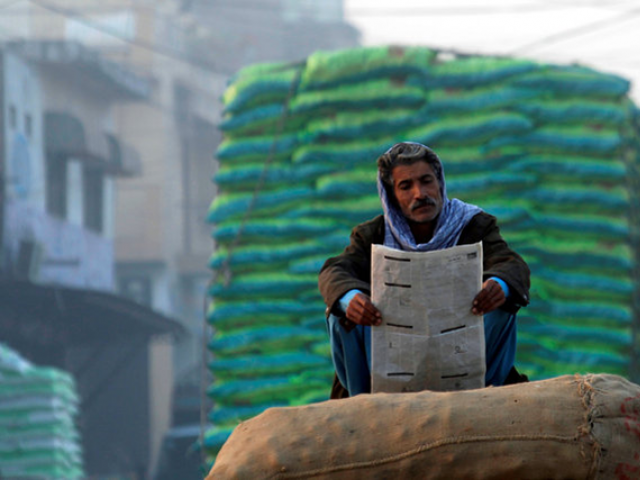Despite swelling debt, finance ministry holds back subsidy
It has so far released Rs104 billion out of total subsidy allocation of Rs118 billion

PHOTO: REUTERS
The Ministry of Water and Power has taken up the matter with Prime Minister Nawaz Sharif and sought his intervention as fiscal year 2016-17 is approaching its end.
The finance ministry has so far released Rs104 billion, which is Rs14 billion less than the total subsidy allocation of Rs118 billion for power consumers in the current fiscal year.
Facing a cash crunch, state-run oil marketing giant Pakistan State Oil (PSO) is persistently arguing that the company is heading towards financial collapse in the face of delay in payments by clients, mainly power producers. The company has also warned of a possible breakdown of the oil supply chain.
In a high-level meeting chaired by the prime minister on energy challenges, Water and Power Secretary Naseem Khokhar said total subsidy allocation stood at Rs118 billion, or 0.3% of gross domestic product (GDP), in the budget for 2016-17 compared to Rs676 billion, or 2.4% of GDP, in financial year 2012-13.
As a result, subsidy payments could not be made to Azad Jammu and Kashmir, K-Electric, industries and Fata.
He asked the prime minister to direct the finance ministry to release the subsidy immediately keeping in view the liquidity crunch.
Instead of responding to the issue, the Finance Division secretary supported a plan for putting additional burden of Rs82 billion on the honest power consumers, who paid their bills regularly, to cover the cost of electricity theft.
The finance secretary suggested that the circular debt, which had reached Rs329 billion on April 5, 2017, could be reduced by addressing structural issues in collaboration with the National Electric Power Regulatory Authority (Nepra).
He pointed out that Nepra in its tariff determination assumed that bill recoveries by power distribution companies would be 100% and their average line losses would be 15.3%. However, actual recoveries were lower at 88-90% and line losses were higher at 19%. The water and power secretary had similar views, who said both the assumptions were not based on ground realities in the country. Owing to the difference, the circular debt had surged from Rs320 billion in October 2014 to Rs374 billion in December 2016.
However, he added, better performance of the distribution companies in 2015 and 2016 with higher recoveries at over 93% and lower line losses at 16.30% coupled with cheaper oil prices, restricted the advance of circular debt.
“Without these systematic improvements, the debt would have topped Rs684 billion,” he remarked.
He asked the prime minister to issue policy directives to the regulator for quarterly tariff adjustment in line with the actual line losses and recoveries, which could bring down the subsidy bill by Rs82 billion.
It was decided that the Ministry of Water and Power would approach the regulator in that regard.
The premier also directed the finance ministry to immediately release the unpaid subsidy in order to address the liquidity crunch in the energy chain.
Published in The Express Tribune, April 21st, 2017.
Like Business on Facebook, follow @TribuneBiz on Twitter to stay informed and join in the conversation.



















COMMENTS
Comments are moderated and generally will be posted if they are on-topic and not abusive.
For more information, please see our Comments FAQ